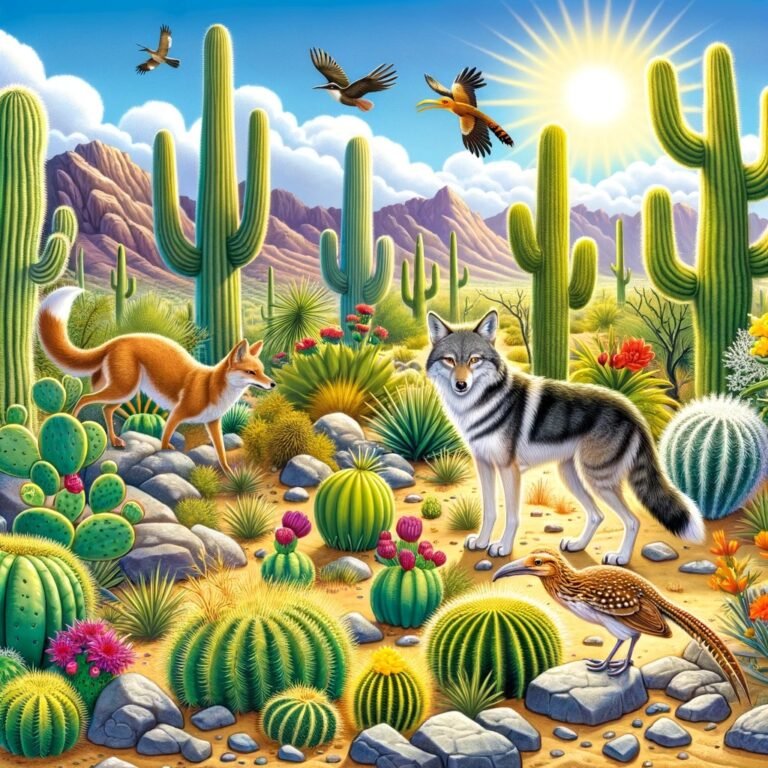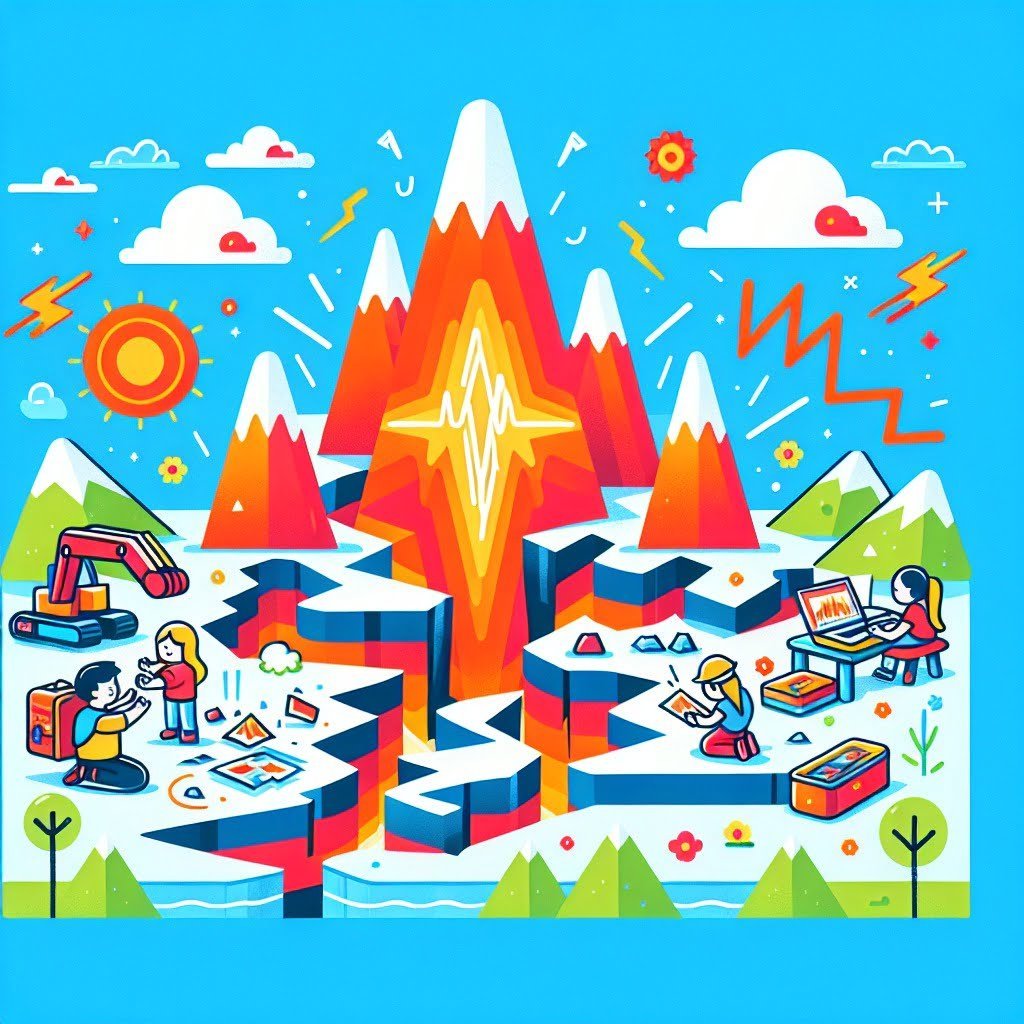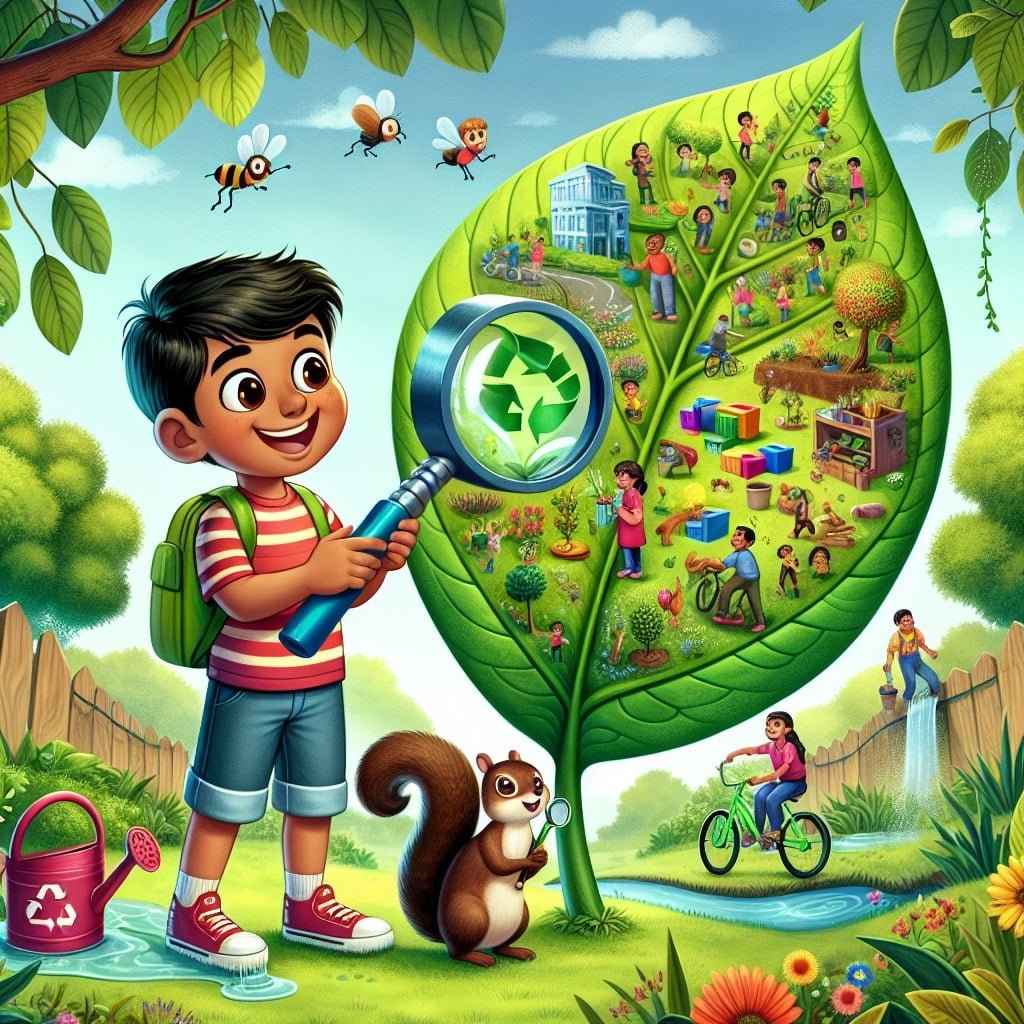Welcome to a world of fascinating knowledge and exciting discoveries about Desert Facts For Kids! Delve into the wonders of deserts with fun facts that will spark curiosity and inspire wonder in young learners. From the vast expanse of the Sahara Desert to the unique adaptations of desert animals, there is a wealth of information waiting to be explored. Join us on a journey through the desert landscapes, where children can learn about the resilience of plant life, the stunning beauty of sand dunes, and the hidden underground water reserves that sustain life in these harsh environments. Through fun and educational insights, let’s venture into the captivating world of deserts and witness the incredible diversity and creativity of nature. Get ready for a wild adventure filled with Desert Facts For Kids that will leave you amazed and appreciative of the wonders that deserts have to offer!
Desert Facts For Kids
1. The Sahara Desert is the Largest Hot Desert in the World

For younger kids: The Sahara Desert is really, really big and super hot.
For older kids: Covering over 3.6 million square miles, the Sahara Desert is the largest hot desert on Earth, with scorching temperatures and vast sand dunes.
Detailed explanation:The Sahara Desert is truly an incredible natural wonder, being the largest hot desert in the world. Covering a vast expanse of approximately 3.6 million square miles, the Sahara stretches across North Africa, encompassing countries such as Egypt, Libya, Sudan, Chad, and Algeria. This massive desert is even larger than the entire country of the United States!
Deserts, like the Sahara, are characterized by their arid climate, with an extremely low amount of precipitation. This lack of water creates harsh conditions for plants and animals trying to survive in the desert environment. Despite these challenges, the Sahara is home to a variety of fascinating species such as the Fennec fox, the addax antelope, and the Arabian camel.
One interesting aspect of the Sahara Desert is the phenomenon of sand dunes. These massive mounds of sand can reach heights of up to 500 feet and are constantly shifting and changing shape due to the wind. The iconic image of endless sand dunes stretching as far as the eye can see is a common sight in the Sahara.
For kids interested in learning more about deserts, the Sahara is a great place to start. They can discover how plants and animals have adapted to survive in such harsh conditions, and learn about the challenges faced by people living in desert regions. Overall, the Sahara Desert is not only the largest hot desert in the world, but also a fascinating ecosystem full of unique desert facts for kids to explore.
Desert Facts For Kids
2. Antarctica is Considered a Cold Desert

For younger kids: Antarctica is not just ice—it’s also a big desert!
For older kids: Despite being covered in ice, Antarctica is classified as a desert due to its low precipitation levels, making it the largest cold desert in the world.
Detailed explanation:Antarctica is considered a cold desert due to its harsh climate, low precipitation, and barren landscape. Despite being covered in ice, it receives very little annual precipitation, making it one of the driest continents on Earth. The majority of the continent is covered by an ice sheet that is several kilometers thick, and most of the precipitation that does fall is in the form of snow.
Like other deserts, Antarctica experiences extreme temperature fluctuations, with summer temperatures hovering around freezing and winter temperatures plummeting well below zero. The lack of liquid water, vegetation, and vegetation further adds to its desert-like qualities. In fact, Antarctica is the coldest, windiest, and driest continent on Earth.
The cold desert environment of Antarctica presents numerous challenges for the plants and animals that call it home. Only a few species of extremophiles, such as lichens and algae, are able to survive in this unforgiving environment. These hardy organisms have adapted to the extreme cold, limited sunlight, and lack of liquid water by developing specialized mechanisms for obtaining nutrients and protecting themselves from the harsh conditions.
Despite its inhospitable climate, Antarctica is a region of great scientific interest and importance. Studying the unique adaptations of organisms that inhabit this cold desert can provide valuable insights into how life can persist in extreme environments. Additionally, research conducted in Antarctica can help us better understand global climate patterns and the effects of climate change. In conclusion, Antarctica’s designation as a cold desert highlights its extreme conditions and underscores its importance as a unique and valuable scientific research site.
Desert Facts For Kids
3. Deserts Can be Cold at Night and Hot During the Day
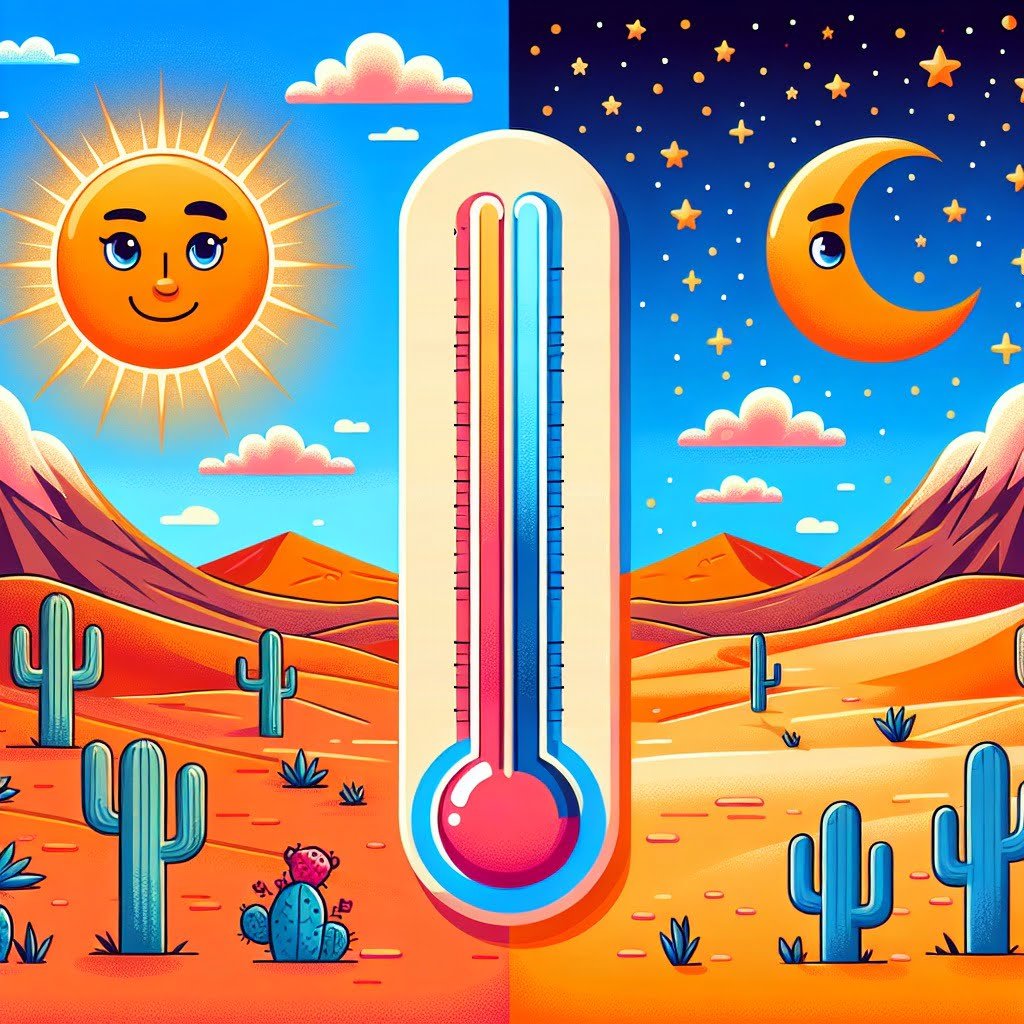
For younger kids: Deserts are really, really hot during the day and very, very cold at night.
For older kids: Due to the lack of humidity, deserts experience extreme temperature fluctuations, with scorching heat during the day and chilly temperatures at night.
Detailed explanation:When it comes to desert facts for kids, one of the most interesting and seemingly contradictory aspects is the extreme temperature fluctuations that can occur in these arid environments. Deserts are known for their scorching daytime temperatures, often reaching well over 100 degrees Fahrenheit. This intense heat is a result of the lack of vegetation to provide shade, as well as the high levels of sunlight that reach the Earth’s surface in these open, flat areas.
However, what many people don’t realize is that deserts can also experience extremely cold temperatures at night. Due to the lack of moisture in the air, the heat absorbed by the ground during the day is quickly radiated back into the atmosphere once the sun sets. This rapid cooling effect can lead to nighttime temperatures dropping below freezing in some deserts.
This stark temperature difference between day and night in deserts is due to the unique characteristics of these ecosystems. The lack of humidity in the air means that there is nothing to trap the heat once the sun goes down, allowing for rapid cooling. Additionally, the sparse vegetation in deserts does not provide any insulation to help regulate the temperature.
So, when teaching kids about desert facts, it’s important to highlight the extreme temperature variations that can occur in these fascinating environments. From scorching hot days to freezing cold nights, deserts truly are a testament to the resilience of life in even the harshest of conditions.
Desert Facts For Kids
4. The Sonoran Desert is the Most Biodiverse Desert in North America
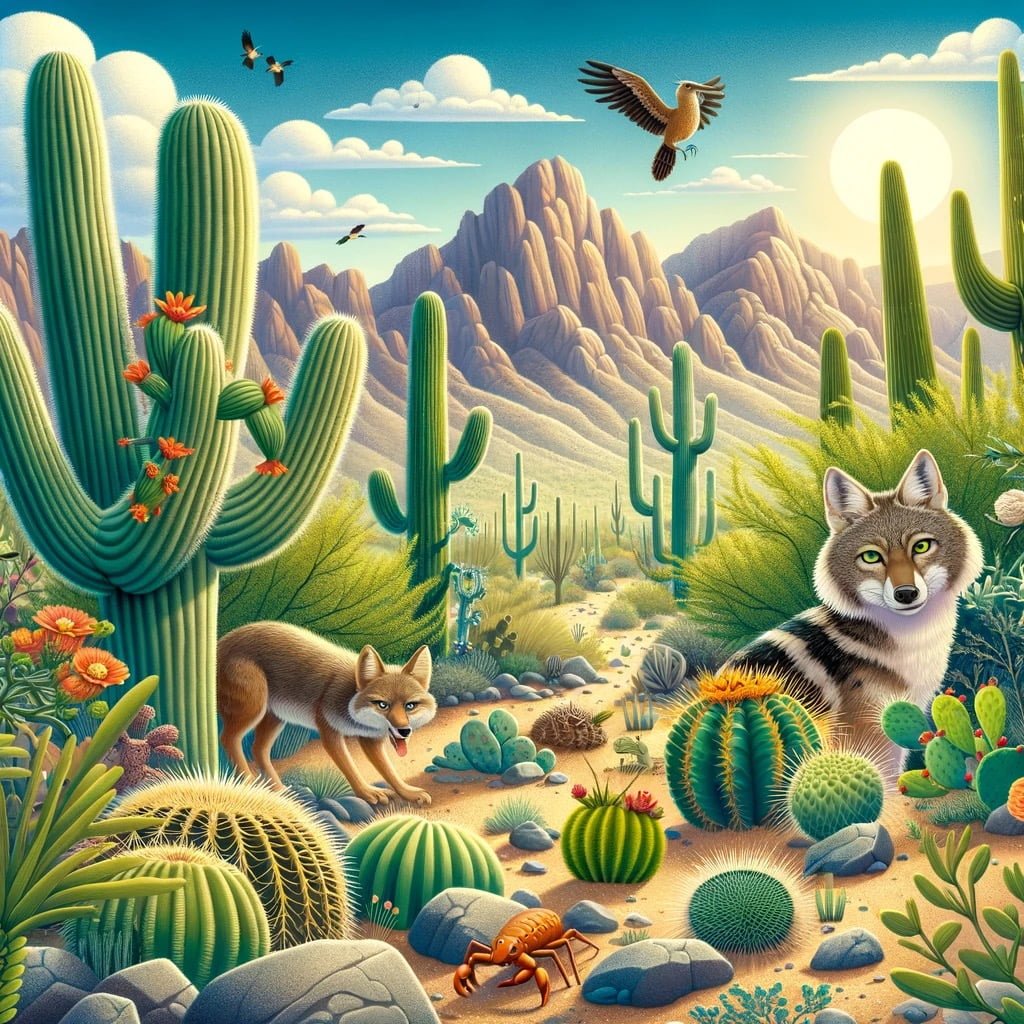
For younger kids: The Sonoran Desert is home to many different plants and animals.
For older kids: With a wide variety of plant and animal species, the Sonoran Desert is considered the most biodiverse desert in North America, with unique cacti and wildlife.
Detailed explanation:The Sonoran Desert, located in the southwestern United States and northwestern Mexico, is often considered the most biodiverse desert in North America. This desert region covers approximately 100,000 square miles and is known for its unique combination of plants and animals that have adapted to its arid and hot conditions.
One of the main reasons why the Sonoran Desert is so biodiverse is its variety of habitats. Within the desert, there are different ecosystems such as cactus forests, riparian areas, and mountain ranges. Each of these habitats supports different plant and animal species, leading to a high level of overall biodiversity in the region.
The desert is home to a wide range of plant species, including iconic cacti such as the saguaro, organ pipe, and barrel cactus. These plants have evolved special adaptations to survive in the harsh desert environment, such as storing water in their stems or having deep root systems to search for water.
In addition to plants, the Sonoran Desert is also teeming with animal life. From the tiny kangaroo rat to the elusive coyote, there is a wide variety of mammals that call the desert home. The desert is also a haven for bird species, with over 350 different types of birds recorded in the region.
Overall, the Sonoran Desert’s high level of biodiversity makes it a truly unique and important ecosystem. By studying and preserving this desert region, scientists can learn more about the adaptations that enable plants and animals to thrive in extreme environments like deserts. These Desert Facts For Kids can help educate the younger generation about the importance of conservation and the beauty of desert ecosystems.
Desert Facts For Kids
5. The Atacama Desert is the Driest Place on Earth
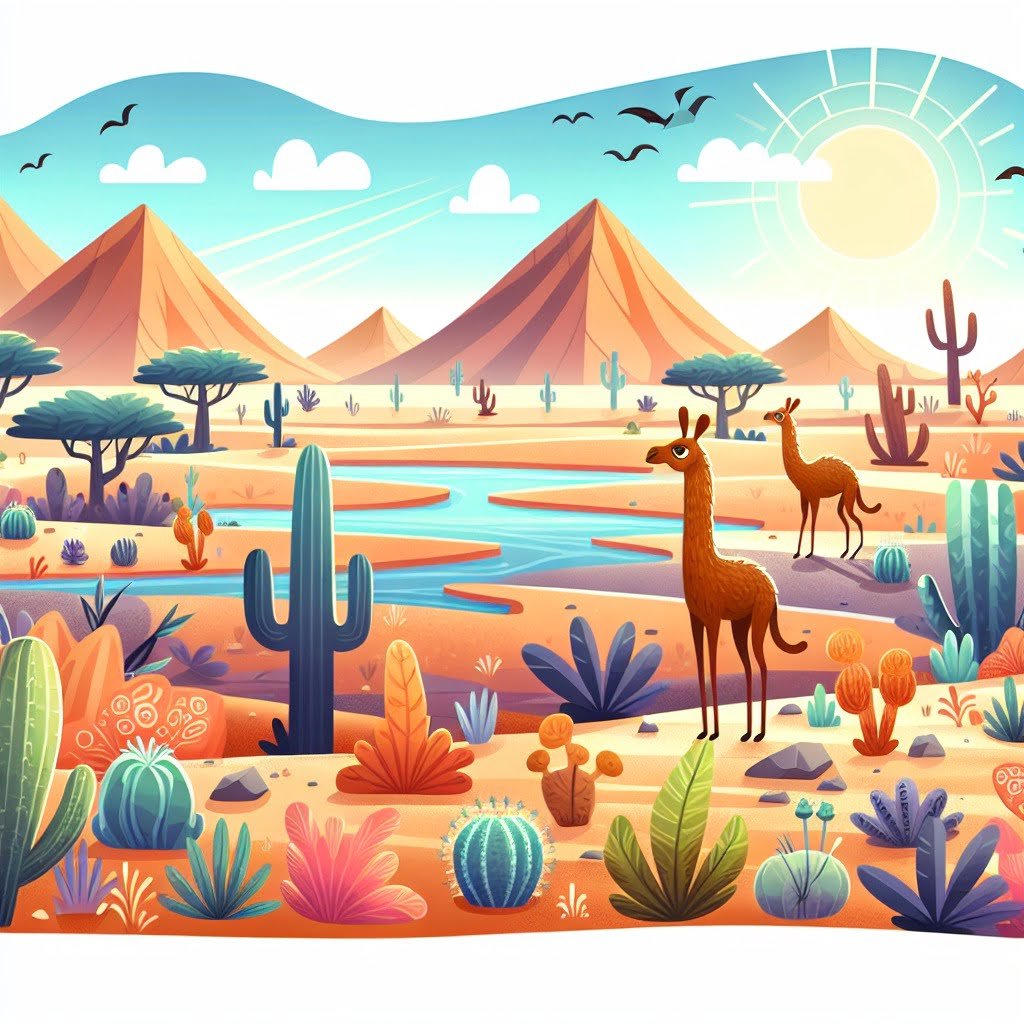
For younger kids: The Atacama Desert is super-duper dry and hardly ever rains.
For older kids: With some areas not receiving any rainfall for centuries, the Atacama Desert in South America is considered the driest place on Earth.
Detailed explanation:The Atacama Desert, located along the coast of Chile in South America, is known as the driest place on Earth. This desert receives very minimal rainfall, with some areas going years without any precipitation at all. The lack of rainfall in the Atacama Desert is due to a combination of factors, including its location between the Andes Mountains and the Pacific Ocean, which create a rain shadow effect. This effect occurs when moisture-laden air from the ocean is blocked by the mountains, preventing it from reaching the desert.
Desert Facts For Kids
The extreme dryness of the Atacama Desert has resulted in a landscape that is often likened to that of Mars, making it a popular location for Mars rover testing and space research. Despite the lack of rainfall, the Atacama Desert is home to a variety of unique plants and animals that have adapted to the harsh conditions. Some of these species, such as the flowering desert plants and the Andean flamingos, can only be found in this specific desert environment.
One interesting fact about the Atacama Desert is that some parts of it have not received any significant rainfall in over 400 years. This makes it one of the oldest and driest deserts in the world. The extreme aridity of the Atacama Desert also means that it is one of the best places on Earth for stargazing, as the lack of moisture in the air results in clear, unpolluted skies.
In conclusion, the Atacama Desert’s status as the driest place on Earth is a result of its unique location and climate conditions. Despite its extreme dryness, the desert is a fascinating and diverse ecosystem that is home to a variety of plants and animals. For kids interested in learning more about deserts, the Atacama Desert is a prime example of the incredible adaptations that life can undergo to survive in even the harshest environments.
Desert Facts For Kids
6. The Sahara Desert is Expanding
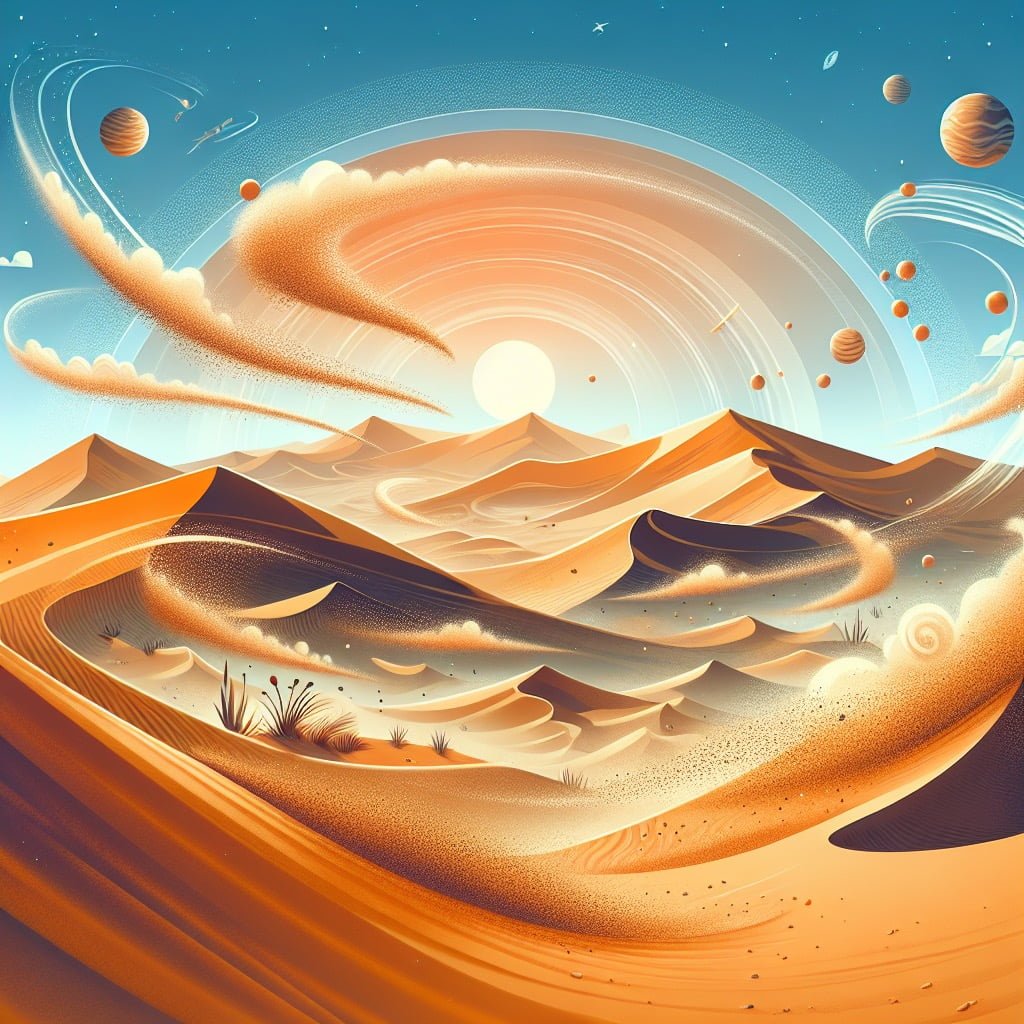
For younger kids: The Sahara Desert is getting bigger and bigger!
For older kids: Due to climate change and human activities, the Sahara Desert is expanding into neighboring regions, leading to environmental and ecological challenges.
Detailed explanation:Desert Facts For Kids
One of the most alarming facts about deserts that many people may not be aware of is that the Sahara Desert is actually expanding. The Sahara Desert is already the largest hot desert in the world, covering over 3.6 million square miles across North Africa. However, due to a combination of natural factors and human activities, the desert is steadily growing in size.
One of the main reasons for the expansion of the Sahara Desert is desertification, a process where fertile land becomes desert. This can be caused by a number of factors, including deforestation, overgrazing, and poor agricultural practices. As the land becomes degraded, it becomes more susceptible to erosion and soil depletion, ultimately leading to desertification. In the case of the Sahara Desert, these factors have been exacerbated by climate change, which is causing temperatures to rise and rainfall to decrease in the region.
The expansion of the Sahara Desert has serious consequences for the people and wildlife that call the region home. As the desert grows, it encroaches on inhabited areas, displacing communities and disrupting ecosystems. The loss of fertile land also means that food production becomes more difficult, leading to food shortages and famine in some areas.
In conclusion, the expansion of the Sahara Desert is a concerning trend that is a result of both natural processes and human activities. It serves as a stark reminder of the importance of sustainable land management practices and the need to address climate change in order to prevent further desertification. Desert Facts For Kids.
Desert Facts For Kids
7. Desert Animals Have Special Adaptations to Survive

For younger kids: Animals in the desert are really good at finding water and hiding from the sun.
For older kids: Desert animals have evolved remarkable adaptations such as storing water, nocturnal behavior, and heat resistance to thrive in harsh desert conditions.
Detailed explanation:Desert animals have developed a wide variety of special adaptations to survive in their harsh and unforgiving environments. One of the most important desert facts for kids to understand is how these unique adaptations help animals thrive in extreme conditions where resources are scarce and temperatures can reach extremes.
One key adaptation that desert animals have developed is the ability to conserve water. In the desert, water is a precious resource that can be hard to come by. Many desert animals have evolved to be able to survive on very little water by having highly efficient kidneys that enable them to extract as much moisture as possible from their food and reabsorb water from their urine. Some desert animals, such as the kangaroo rat, are even able to obtain all the water they need from the seeds they eat, eliminating the need to drink water at all.
Another important adaptation for desert animals is their ability to regulate their body temperature in the face of extreme heat. Many desert animals are active at night when temperatures are cooler, while others have developed physical traits such as light-colored fur or feathers to reflect sunlight and stay cool during the day. Some desert animals, like the Fennec fox, even have large ears that help them dissipate heat and stay cool in the scorching desert sun.
Overall, the special adaptations that desert animals have evolved over time are truly remarkable and serve as a testament to the incredible diversity and resilience of life in the world’s deserts. Understanding these desert facts for kids can help foster a deeper appreciation for the natural world and the amazing creatures that call the desert home.
Desert Facts For Kids
8. Deserts Can Have Stunning Sand Dunes

For younger kids: Some deserts have really big hills made of sand!
For older kids: Deserts like the Namib Desert in Africa and the Arabian Desert boast breathtaking and massive sand dunes, creating stunning landscapes.
Detailed explanation:Deserts are not just vast stretches of barren land, but they are also diverse environments that can be home to stunning sand dunes. These dunes are formed through a process called aeolian sediment transport, where wind carries sand particles and deposits them in certain areas, creating beautiful rolling hills of sand.
One of the most iconic deserts known for its impressive sand dunes is the Sahara Desert in Africa. The dunes in the Sahara can reach towering heights of up to 500 feet, creating a dramatic landscape that is both awe-inspiring and inhospitable. These dunes are constantly shifting and changing shape due to the force of the wind, making them a dynamic feature of the desert environment.
Another famous desert with stunning sand dunes is the Namib Desert in Namibia. Here, the dunes are known for their vibrant red-orange color, caused by the high iron oxide content in the sand. The most famous dune in the Namib Desert is Dune 45, which is a popular tourist attraction for those seeking to witness the breathtaking beauty of the desert landscape.
Despite the harsh conditions of deserts, these environments are teeming with life and are important ecosystems in their own right. From the adapted plants and animals that call deserts home to the unique geological features like sand dunes, there is much to be explored and appreciated in these arid regions. So, the next time you think of deserts, remember that they are not only barren landscapes but also places of stunning beauty with their impressive sand dunes.
Desert Facts For Kids
9. Many Deserts Have Unique Plant Life
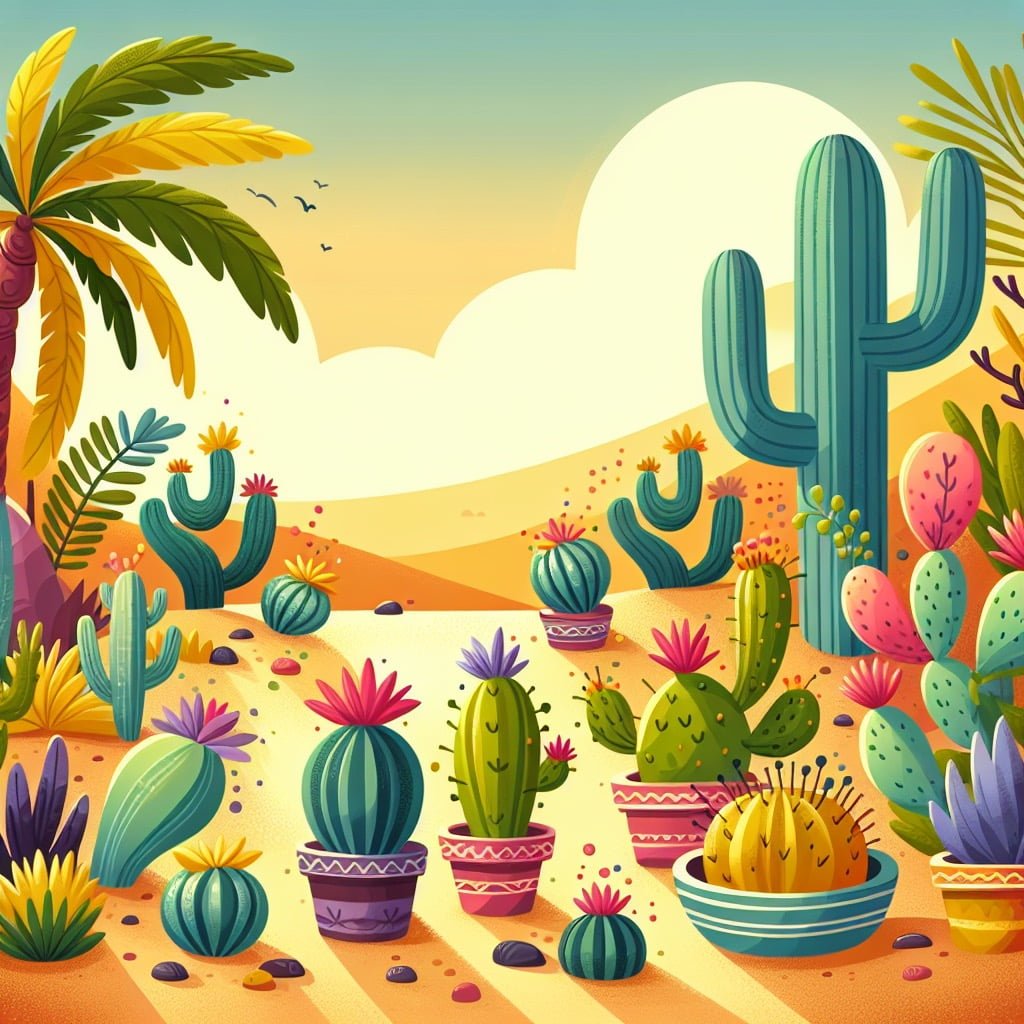
For younger kids: We can find cool plants in the desert, like cacti and succulents!
For older kids: Deserts are home to a diverse range of plants specially adapted to conserve water, such as cacti, agaves, and other succulents with fascinating shapes and colors.
Detailed explanation:Deserts are often thought of as barren, lifeless landscapes, but in reality, many deserts around the world have unique and diverse plant life. Contrary to popular belief, deserts can actually be hotspots of biodiversity, with plants that have adapted to survive in the harsh and arid conditions.
One of the most fascinating Desert Facts For Kids is the adaptations that desert plants have developed to thrive in their environment. Many desert plants have evolved to minimize water loss, such as by having small leaves or spines to reduce surface area and prevent evaporation. Some plants, like cacti, store water in their stems to survive long periods of drought. Other desert plants have deep root systems that allow them to tap into underground water sources.
In addition to their water-saving adaptations, desert plants have also developed unique strategies for reproduction and dispersal. Some plants only bloom after a rainfall, taking advantage of the brief period of moisture to produce flowers and seeds. Other plants produce seeds with specialized appendages that allow them to be carried by the wind or animals to new locations.
Overall, the plant life in deserts is incredibly diverse and fascinating, with species that have evolved incredible adaptations to survive in extreme conditions. By studying and appreciating the unique plant life found in deserts, we can gain a greater understanding of the resilience and adaptability of living organisms.
Desert Facts For Kids
10. Some Deserts Have Underground Water Reserves
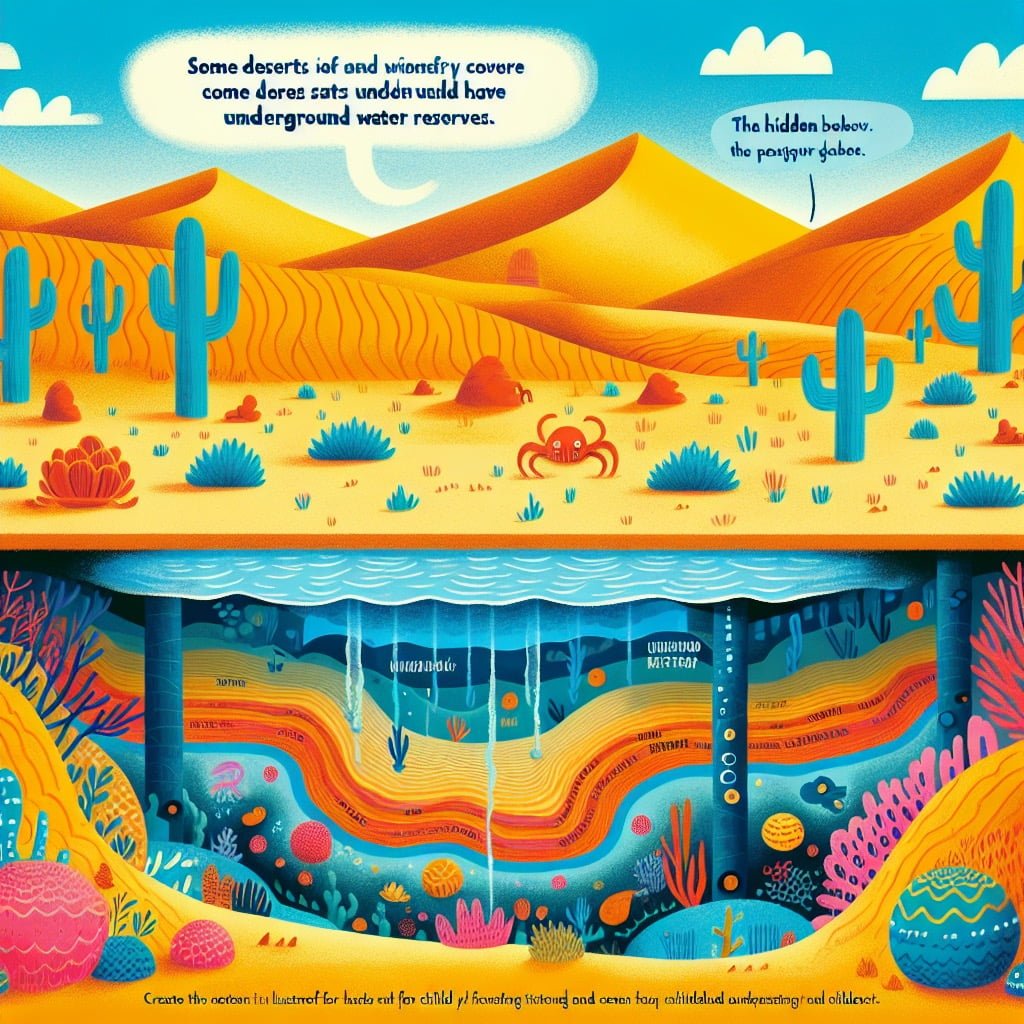
For younger kids: Even though deserts seem dry, there can be water hiding underground!
For older kids: Despite their arid appearance, some deserts hide vast underground water reserves, known as aquifers, which are crucial for supporting desert ecosystems and human settlements.
Detailed explanation:Deserts are often thought of as dry, barren landscapes with little to no water sources. However, many deserts actually have hidden underground water reserves that play a crucial role in sustaining life in these harsh environments. One important example of this phenomenon can be found in the Sahara Desert, the largest hot desert in the world.
Despite its reputation for extreme aridity, the Sahara Desert actually contains several aquifers that store vast amounts of groundwater. These underground reservoirs are formed when water from occasional rainfall or distant rivers seeps into the porous rock layers beneath the desert surface. Over time, this water accumulates in underground pockets, creating a vital source of hydration for plant and animal life in the region.
One of the most well-known underground water reserves in the Sahara Desert is the Nubian Sandstone Aquifer System, which spans across several countries in North Africa. This massive aquifer is estimated to hold billions of cubic meters of water, making it one of the largest freshwater sources in the world.
The presence of underground water reserves in deserts is crucial for the survival of desert ecosystems and the human populations that rely on them. In fact, many desert communities have developed sophisticated systems for accessing and managing these hidden water sources, using techniques such as wells, qanats, and fog harvesting to sustain themselves in these challenging environments.
In conclusion, the existence of underground water reserves in deserts challenges the common misconception that these landscapes are entirely devoid of water. By understanding and appreciating these Desert Facts For Kids, we can gain a deeper insight into the complex and resilient ecosystems that thrive in some of the harshest environments on Earth.
Did You Know?
Desert plants like cacti can store large amounts of water to survive long periods of drought, making them true survivors of the desert environment.
Summary of Desert Facts For Kids
Desert Facts For Kids is a fascinating and educational blog post that delves into the wonders of deserts and the unique adaptations of the plants and animals that call these harsh environments home. From camels to kangaroo rats, readers will learn about the amazing survival strategies that desert creatures have developed to thrive in such extreme conditions.
Not only does the blog explore the incredible diversity of life in deserts, but it also showcases the stunning landscapes that can be found in these arid regions. From towering sand dunes to vibrant rock formations, the beauty of deserts is truly awe-inspiring and not to be missed.
But beyond just showcasing the beauty and complexity of deserts, Desert Facts For Kids also emphasizes the importance of conservation and sustainable living. By understanding the challenges facing desert ecosystems, readers can gain valuable insights into how to protect these vital regions and work towards a more harmonious relationship with the natural world.
Overall, Desert Facts For Kids offers a captivating and informative look into the world of deserts, making it a must-read for anyone curious about nature, wildlife, and the wonders of our planet. So, dive in and discover the fascinating world of deserts that awaits!
Sources and additional information for Desert Facts For Kids
WikipediaBritannicaEnvironmental Protection Agency (EPA)National Oceanic and Atmospheric Administration (NOAA)The Nature ConservancyWorld Wildlife FundEarth Day NetworkGreenpeace InternationalJane Goodall InstituteEnvironmental Protection Agency (EPA)World Wildlife Fund – ConservationNature ConservancyGreenpeaceUnited Nations Environment Programme (UNEP)Conservation InternationalEarthwatch InstituteEnvironmental Defense FundSierra Club
